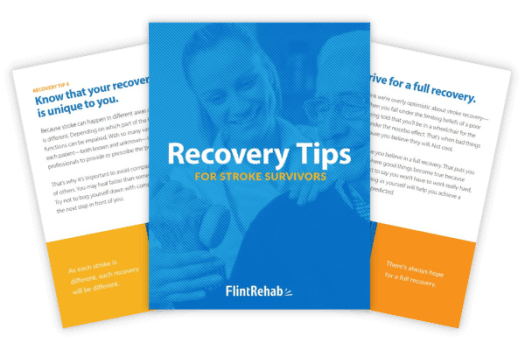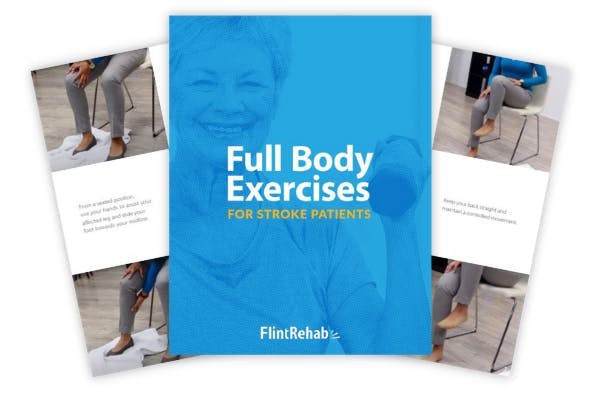No products in the cart.
No products in the cart.
No products in the cart.
No products in the cart.
Home » Neurological Recovery Blog » Stroke » Stroke Side Effects » Ocular Migraines and Stroke: Understanding the Link & Risk Factors
Last updated on November 7, 2022

Ocular migraines and stroke are two conditions that share similar symptoms and can often be confused. Although an ocular migraine alone does not indicate a stroke, studies show that those who suffer from ocular migraines may be at a higher risk of experiencing a stroke.
Understanding the causes and symptoms of both conditions can help you differentiate between ocular migraines and stroke to help you seek the proper medical care.
This article will discuss how to tell the difference between ocular migraines and stroke, potential risk factors, and steps for preventative care.
Stroke is the 5th leading cause of death in the U.S. and is also a leading cause of long-term disability. This neurological injury occurs when an artery in the brain is compromised, depriving different parts of the brain of oxygen-rich blood and nutrients. This can happen when the artery becomes obstructed (called an ischemic stroke) or when an artery bursts (called a hemorrhagic stroke).
When the brain is deprived of oxygen, brain cells begin to die and brain damage may occur. This damage can lead to a variety of secondary effects, such as impaired mobility or speech, especially if treatment is delayed.
A stroke is a life-threatening condition that requires immediate medical intervention. The American Stroke Association developed an acronym, F.A.S.T., to help identify the symptoms of a stroke more quickly.
F.A.S.T. stands for:
Symptoms of stroke can also include sudden intense vertigo or dizziness, rapid onset of numbness or tingling, confusion, vision changes, and headaches. If you or a loved one experience any of the symptoms above, it is important to seek emergency medical care immediately.
Migraines are severe headaches caused by shrinking of cerebral blood vessels, which creates a throbbing or pulsing pain in the skull. Ocular migraines in particular are migraines accompanied by auras or visual disturbances.
Studies show that many people experience an aura before the onset of other ocular migraine symptoms. Auras generally affect both eyes and cause visual disturbances such as flashing or zigzagging lights, blind spots, or shimmering lights or stars.
Other common symptoms of an ocular migraine can include:
The symptoms of an ocular migraine can overlap with the early signs of stroke. Therefore, if you experience any visual disturbances or other symptoms along with your migraine, it is important to seek emergency medical attention. Early intervention can help minimize the effects of a stroke and lower the risk of complications.
Now that you know the unique characteristics of ocular migraines and stroke you may be wondering if there is a connection between these two conditions.
Migraine sufferers are at a higher risk of ischemic stroke, which is the type of stroke caused by a blood clot obstructing an artery in the brain. The risk of stroke almost triples for those who suffer from regular ocular migraines, according to the American Stroke Association.
This is because a migraine with an aura causes blood vessels to narrow further and as a result increases the risk of stroke. In fact, studies show that this increased stroke risk is particularly higher in women, including those younger than the age of 45.
Women may be at a greater risk due to hormonal changes and the use of hormonal contraceptives, which can increase the chances of hypercoagulation or blood clots. Other factors such as smoking and obesity can also increase the risk of stroke.
Still, when an individual experiences an ocular migraine it does not mean they will have a stroke, but rather that there is a higher risk of stroke and preventative measures should be taken. It is important to talk to your doctor if you are concerned about ocular migraines and develop a plan to address any manageable stroke risk factors.
Although rare, a stroke can occur during an ocular migraine, which doctors refer to as a migrainous infarction. These types of stroke account for only 0.5 percent of all ischemic stroke cases. Migrainous infarctions are associated with auras, which can make it challenging to differentiate from a regular ocular migraine.
One key difference between the two is that auras during a migrainous infarction typically last longer than during an ocular migraine. Typically auras during an ocular migraine can last between a few minutes and an hour, depending on the severity. If you experience aura symptoms, such as flashing or zigzagging lights, for greater than 60 minutes this may be a symptom of a migrainous infarction and it is important to seek emergency medical care.
Additional differences between ocular migraines and strokes may include:
Additionally, migraines begin with “positive symptoms” whereas strokes tend to begin with “negative symptoms.” For example, when an ocular migraine begins, something new may be added to your vision (a positive symptom) such as bright flashes of light. At the start of a stroke, functions are usually lost or removed (negative symptoms) such as the ability to speak or see clearly.
Ocular migraines and prolonged auras may indicate a more serious, life-threatening condition such as a migrainous infarction. If you experience a severe headache accompanied by facial drooping or another stroke symptom, with or without visual disturbance, call 911 immediately.
If you have a history of headaches or migraines, it is important to follow up with your doctor for frequent evaluations. They can provide you with a treatment plan suitable for your condition. In addition to avoiding common migraine triggers such as bright lights, alcohol, or sleep deprivation, there are several other ways to help reduce the risk of ocular migraines and strokes.
To help manage your symptoms and prevent an ocular migraine or stroke, you can:
Establishing and maintaining healthy habits is incredibly beneficial, especially for individuals who experience ocular migraines. Your doctor can also provide you with more preventative care techniques that are safe and effective to help manage ocular migraines and stroke risk.
One key difference between a stroke and ocular migraines is symptom onset. Symptoms of an ocular migraine typically worsen with time, and there is often a warning before it appears. Symptoms of a stroke often appear suddenly and without warning.
Fortunately, even if you have a history of ocular migraines, there are several steps to help reduce the risk of stroke. This can include a combination of exercise, hydration, meditation, and other healthy lifestyle changes.
We hope this article helped you understand the correlation between ocular migraines and stroke.

Get our free stroke recovery ebook by signing up below! It contains 15 tips every stroke survivor and caregiver must know. You’ll also receive our weekly Monday newsletter that contains 5 articles on stroke recovery. We will never sell your email address, and we never spam. That we promise.


Do you have these 25 pages of rehab exercises?
Get a free copy of our ebook Full Body Exercises for Stroke Patients. Click here to get instant access.
“My name is Monica Davis but the person who is using the FitMi is my husband, Jerry. I first came across FitMi on Facebook. I pondered it for nearly a year. In that time, he had PT, OT and Speech therapy, as well as vision therapy.
I got a little more serious about ordering the FitMi when that all ended 7 months after his stroke. I wish I hadn’t waited to order it. He enjoys it and it is quite a workout!
He loves it when he levels up and gets WOO HOOs! It is a wonderful product! His stroke has affected his left side. Quick medical attention, therapy and FitMi have helped him tremendously!”
FitMi is like your own personal therapist encouraging you to accomplish the high repetition of exercise needed to improve.
When you beat your high score or unlock a new exercise, FitMi provides a little “woo hoo!” as auditory feedback. It’s oddly satisfying and helps motivate you to keep up the great work.
In Jerry’s photo below, you can see him with the FitMi pucks below his feet for one of the leg exercises:
Many therapists recommend using FitMi at home between outpatient therapy visits and they are amazed by how much faster patients improve when using it.
It’s no surprise why over 14,000 OTs voted for FitMi as “Best of Show” at the annual AOTA conference; and why the #1 rehabilitation hospital in America, Shirley Ryan Ability Lab, uses FitMi with their patients.
This award-winning home therapy device is the perfect way to continue recovery from home. Read more stories and reviews by clicking the button below:
Grab a free rehab exercise ebook!
Sign up to receive a free PDF ebook with recovery exercises for stroke, traumatic brain injury, or spinal cord injury below: